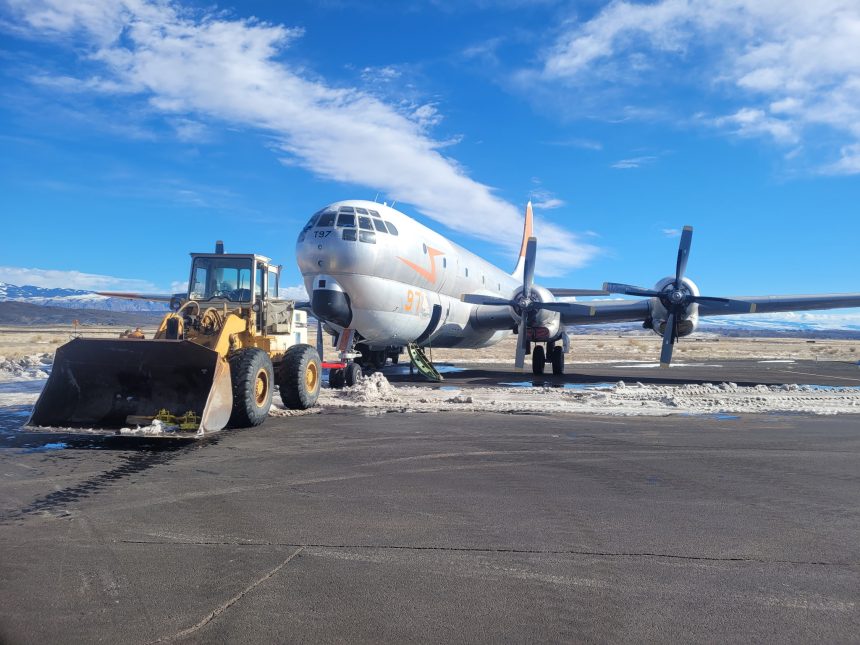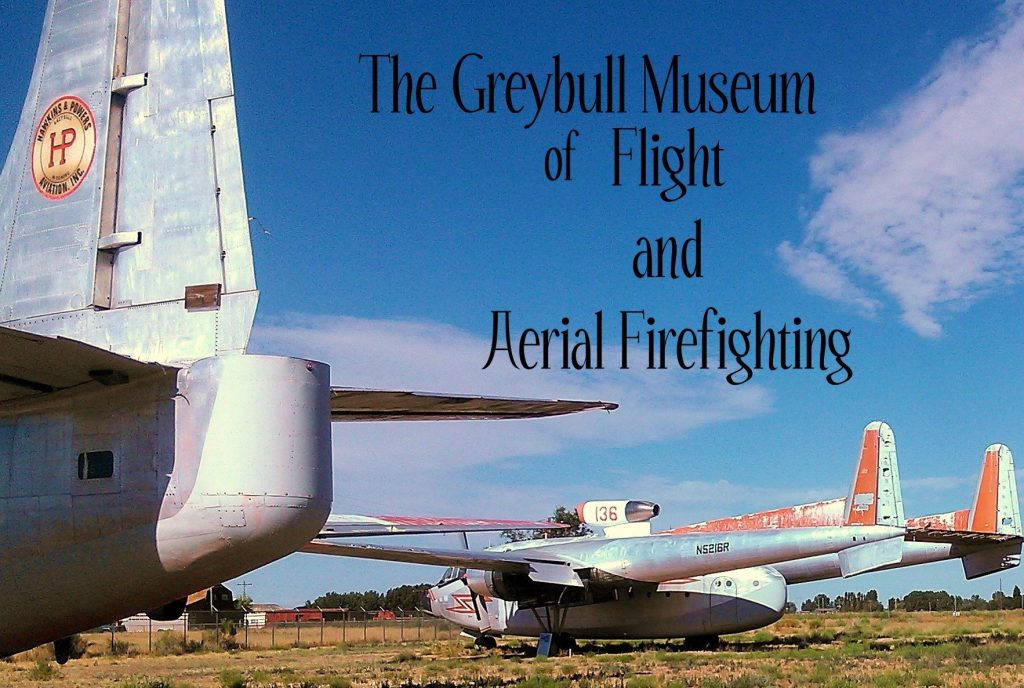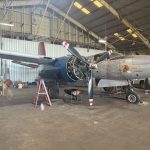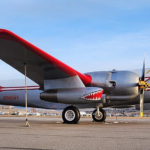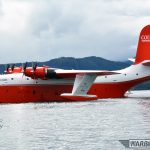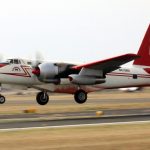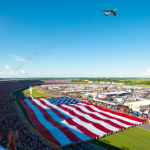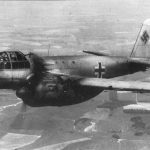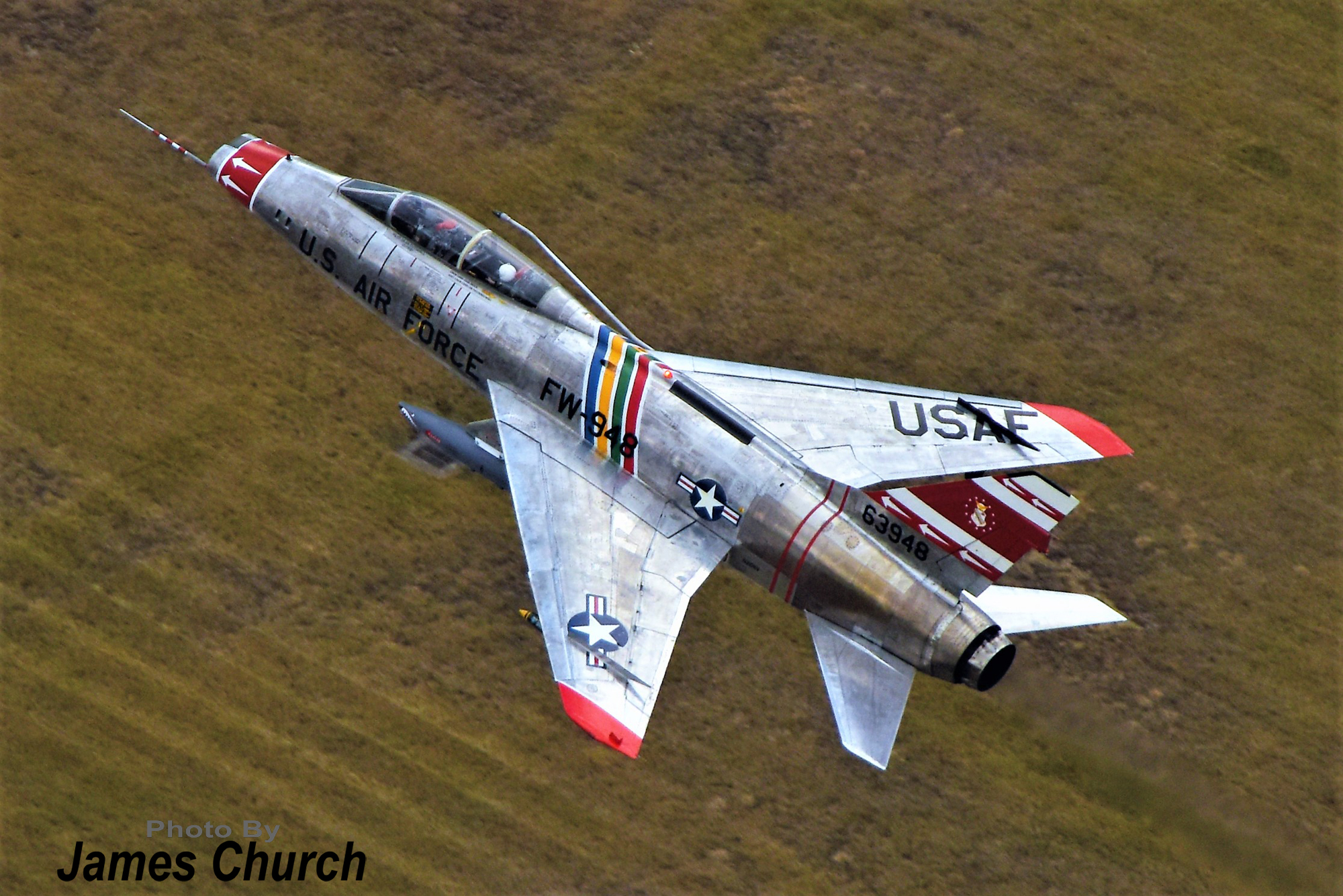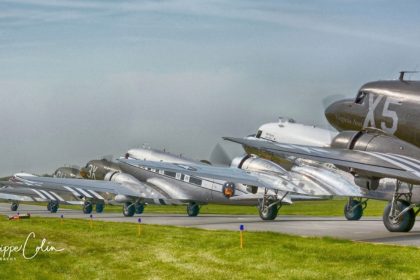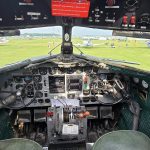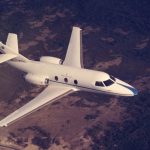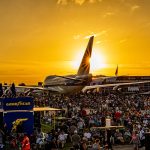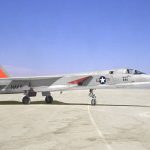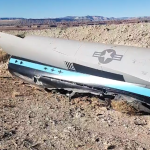The Museum of Flight and Aerial Firefighting has welcomed a significant addition to its collection—a Boeing KC-97, once the largest air tanker operated by the legendary Wyoming-based aviation company Hawkins & Powers (H&P). Recently, a dedicated group of residents worked to repair a flat tire on the aircraft and carefully towed it about half a mile from its previous location near the B&G Industries hangar to the museum, situated just behind the Greybull Rest Area. The museum was finally able to move its newest addition, the Boeing KC-97 (Tanker 97). After waiting for over a year, the necessary cold temperatures arrived, freezing the ground and preventing the aircraft’s tires from sinking into the soft soil. This aircraft was generously donated by the Berlin Airlift Historical Foundation.
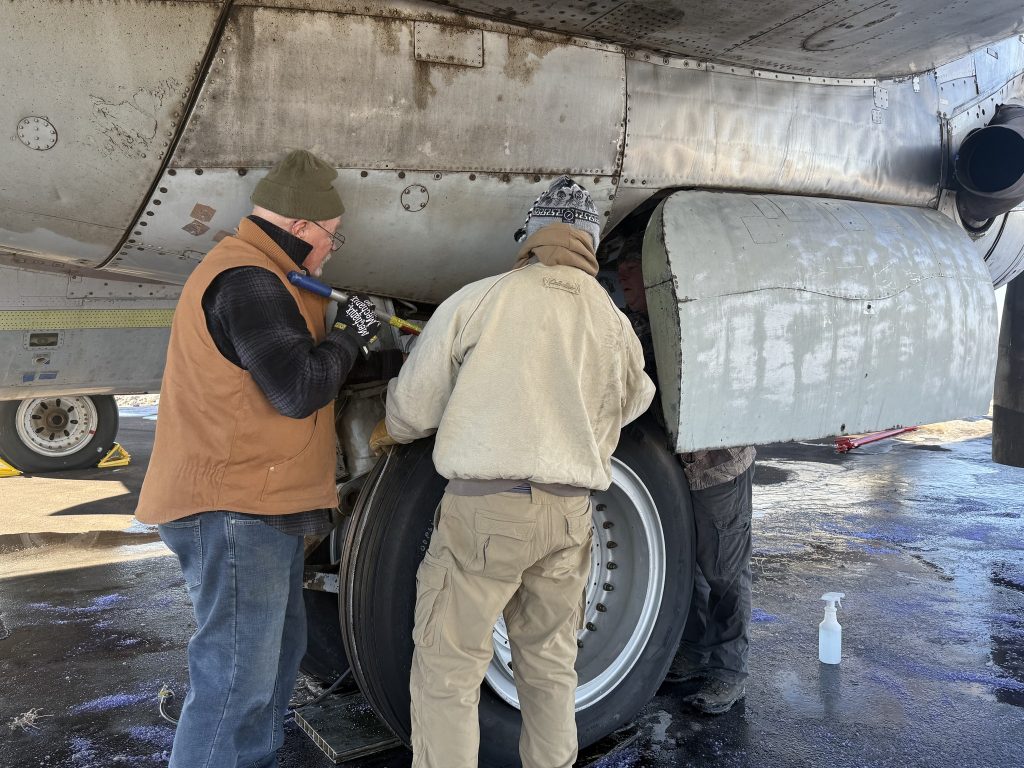
When the museum reopens in the spring, the KC-97 will become the eighth historic aircraft on display, joining two PB4Y-2 Privateers, two C-119 Flying Boxcars, a Neptune P2V-7, a Beech 18, and an Aero Commander 500. Except for the Aero Commander, donated by Bridger Aerospace in 2022, all these aircraft were either operated by or are representative of the types used by Hawkins & Powers during its 35 years in aerial firefighting.
A Legacy in Firefighting
Bob Hawkins, who oversees the museum, shared that the KC-97 was an integral part of H&P’s firefighting fleet for nearly two decades, primarily battling wildfires in Alaska before its retirement in 2004. After its firefighting days ended, the aircraft remained at the Greybull airport, changing ownership multiple times. It was first purchased by aviation legend Clay Lacy during H&P’s asset liquidation in 2005–06, then sold to B&G Industries, and later acquired by the Berlin Airlift Historical Foundation. The KC-97’s final transfer to the museum was facilitated by Tim Chopp, founder and president of the Berlin Airlift Historical Foundation, who donated the aircraft. The process had been in motion for over a year, but logistical challenges delayed the move. “We couldn’t relocate it last year because the ground warmed up too quickly,” Hawkins explained. “You need frozen ground to safely move an aircraft of this size.”
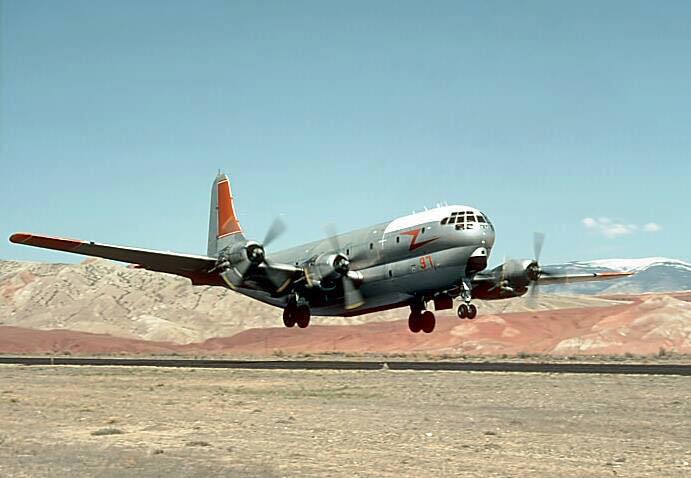
The Rise and Fall of Hawkins & Powers
Hawkins & Powers traces its roots back to 1947 as a small aerial spraying company. By the 1960s, Dan Hawkins and Gene Powers had taken over operations, rebranding the business in 1969. Over the following decades, H&P became one of the largest privately owned aerial firefighting companies in the United States. The company specialized in acquiring surplus military aircraft, retrofitting them for firefighting, and securing government contracts. At its peak in 2002, H&P employed over 200 people at its Greybull base. However, that same year, the company suffered two catastrophic crashes due to structural failures. The accidents led to increased scrutiny, resulting in the loss of key contracts. By 2004, the company was forced to close its doors. A fascinating photo gallery of the aircraft used by Hawkins & Powers is available on Air Britain Pics at this link.
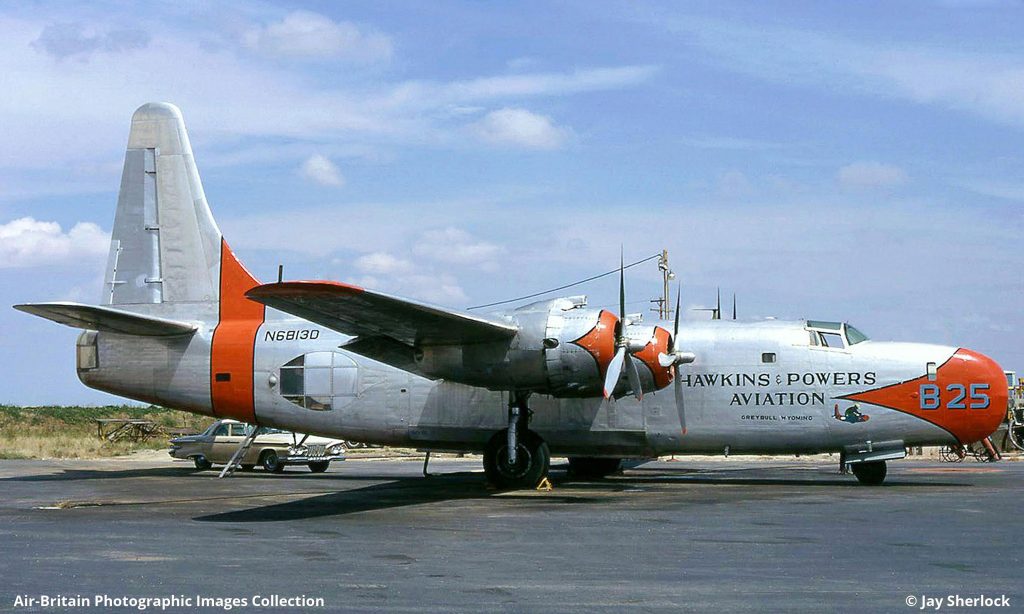
Jay Sherlock – 08/1972 – Image via Air Britain Pics.
Memories of a Firefighting Workhorse
Among those involved in the recent move was retired pilot Bob West, who flew the KC-97 from 1984 to 2004, primarily in Alaska. Bob released an interview with the local newspaper Greybull Standard. “It was a great aircraft for the job,” West recalled. “It carried a solid load—3,000 gallons of fire retardant was standard, but under the right conditions, it could hold 4,000 gallons. The only drawback was that it was a little underpowered.” While the KC-97 was a capable aerial firefighter, its engines ultimately proved to be its weak point. “It had good engines, but they were its Achilles’ heel,” West admitted. Despite this, the aircraft was versatile, even being used one winter to airlift hay to bison on a snowbound reservation.
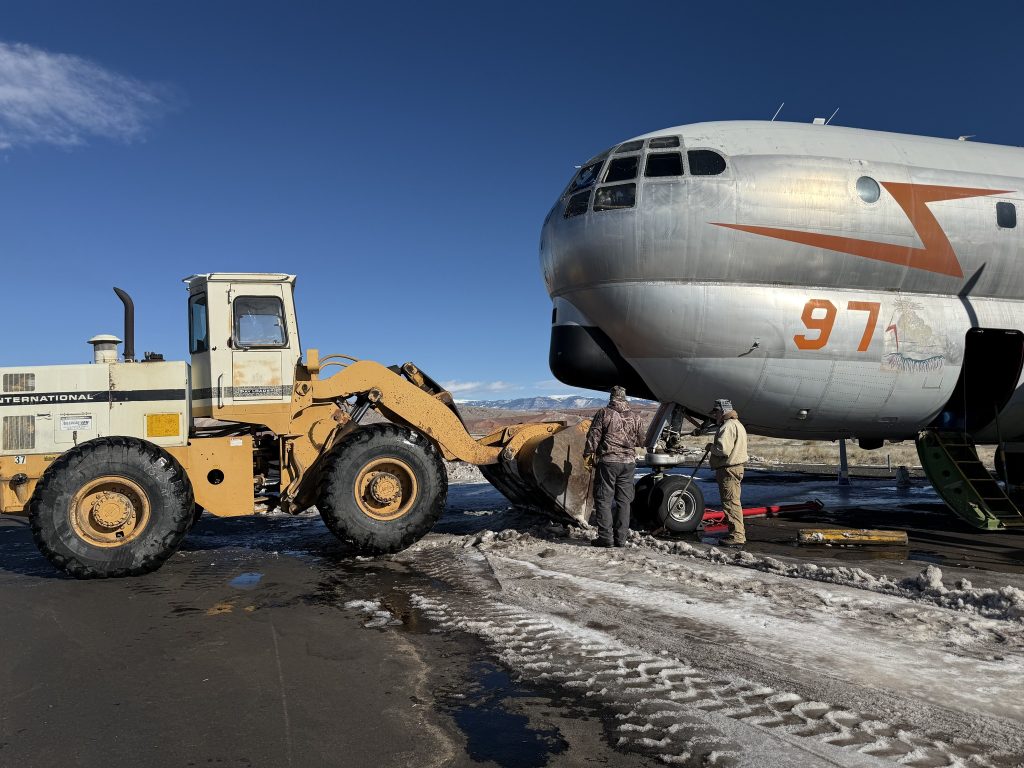
Today’s firefighting aircraft are more advanced, with some capable of carrying up to 10,000 gallons of retardant while offering modern amenities like pressurized cabins and air conditioning—luxuries West and his crew could only dream of. “That’s why the cockpit was painted white—to reflect the sun,” West said. “We’d open all the doors and even take the windows out just to cool off.” One of West’s fondest memories of the KC-97 was celebrating his 50th birthday inside the plane, a moment made special by his firefighting colleagues in Alaska.
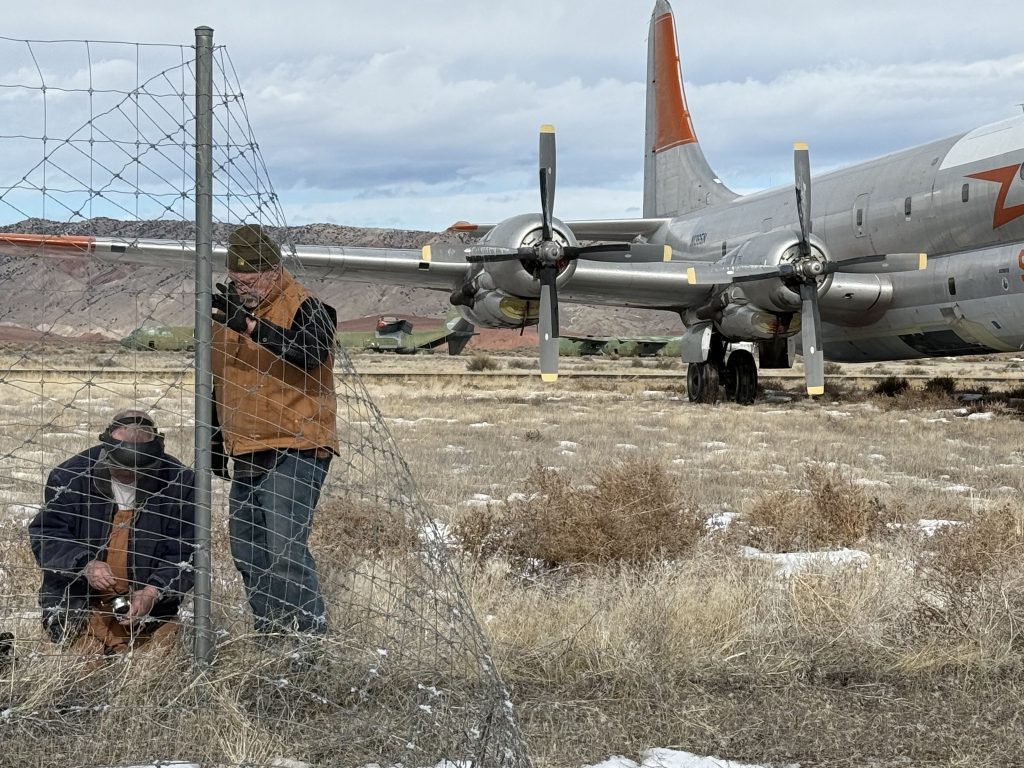
A Future Museum Centerpiece
Now retired in Greybull, West is excited to see the KC-97 preserved for future generations. “It’s going to be a fantastic museum piece,” he said. “People will be able to go inside and experience it, but they’ll also need to make sure it’s protected—everyone wants a souvenir.” While the aircraft remains technically flyable, that status will soon change. The Berlin Airlift Historical Foundation plans to remove its four engines, replacing them with non-functional units to maintain its authentic appearance. With the KC-97 now part of the museum’s collection, it stands as a testament to the legacy of Hawkins & Powers and the daring crews who flew these mighty aircraft in the battle against wildfires. For more information and to support the museum, visit www.museumofflight.us







